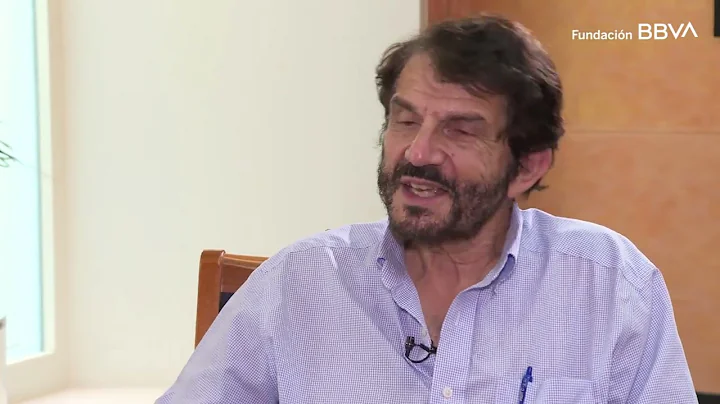David F Weitz
age ~39
from Berkeley, CA
- Also known as:
-
- David Frankel Weitz
- David Frankel Mccleary
- David F Mccleary
- David Mc Cleary
David Weitz Phones & Addresses
- Berkeley, CA
- El Sobrante, CA
- Irvine, CA
- San Diego, CA
- La Jolla, CA
Work
-
Company:Takeda san diego inc
-
Address:10410 Science Center Dr, San Diego, CA 92121
-
Phones:(858)6228528
-
Position:Cto
-
Industries:Noncommercial Research Organizations
Education
-
Degree:JD/MBA - Juris Doctorate and MBA
-
School / High School:UC Berkeley SOL Boalt Hall
Ranks
-
Licence:California - Active
-
Date:1992
Us Patents
-
Vesicles Comprising An Amphiphilic Di-Block Copolymer And A Hydrophobic Compound
view source -
US Patent:20040010060, Jan 15, 2004
-
Filed:Mar 19, 2003
-
Appl. No.:10/392123
-
Inventors:Mathieu Joanicot - Chatenay-Malabry, FR
Ani Nikova - San Diego CA, US
Maria Talingting - Burlington NJ, US
David Weitz - Bolton MA, US -
International Classification:C08F002/00
-
US Classification:523/201000
-
Abstract:The invention relates to new vesicles structures, and their use for delivering actives. The vesicles according to the invention are obtained from di-block copolymers. The vesicles comprise an external shell of a di-block copolymer comprising a hydrophilic block and a hydrophobic block, and at least one internal shell of the same or another di-block copolymer comprising a hydrophilic block and a hydrophobic block, the hydrophobic block of the external shell facing the hydrophobic block of the internal shell(s), and further comprise a hydrophobic compound between the shells.
-
Fluidic Droplet Coalescence
view source -
US Patent:20070195127, Aug 23, 2007
-
Filed:Jan 24, 2007
-
Appl. No.:11/698298
-
Inventors:Keunho Ahn - San Diego CA, US
Henry Chong - Cambridge MA, US
Jeremy Agresti - Cambridge MA, US
David Weitz - Bolton MA, US
Darren Link - Guilford CT, US -
Assignee:President and Fellows of Harvard College - Cambridge MA
-
International Classification:B41J 2/06
-
US Classification:347055000
-
Abstract:The present invention generally relates to systems and methods for the control of fluidic species and, in particular, to the coalescence of fluidic droplets. In certain instances, the systems and methods are microfluidic. In one aspect, the invention relates to systems and methods for causing two or more fluidic droplets within a channel to coalescence. The fluidic droplets may be of unequal size in certain cases. In some embodiments, a first fluidic droplet may be caused to move at a first velocity, and a second fluidic droplet may be caused to move at a second velocity different from the first velocity, for instance, substantially greater than the first velocity. The droplets may then coalesce, for example, upon application of an electric field. In the absence of an electric field, in some cases, the droplets may be unable to coalesce. In some cases, two series of fluidic droplets may coalesce, one or both series being substantially uniform. For instance, one series of droplets may have a distribution of diameters such that no more than about 5% of the droplets have a diameter greater than about 10% of the average diameter. In certain cases, one or more series of droplets may each consist essentially of a substantially uniform number of entities of a species therein (i.e., molecules, cells, particles, etc.). The fluidic droplets may be coalesced to start a reaction, and/or to stop a reaction, in some cases. For instance, a reaction may be initiated when a species in a first droplet contacts a species in a second droplet after the droplets coalesce, or a first droplet may contain an ongoing reaction and a second droplet may contain a species that inhibits the reaction. Other embodiments of the invention are directed to kits or methods for promoting the coalescence of fluidic droplets.
-
Spray Drying Techniques
view source -
US Patent:20120167410, Jul 5, 2012
-
Filed:Dec 20, 2011
-
Appl. No.:13/330793
-
Inventors:Adam R. Abate - San Francisco CA, US
Julian W.P. Thiele - Schwarzenbek, DE
David A. Weitz - Bolton MA, US
Christian Holtze - Frankfurt, DE
Maike Windbergs - Saarbruecken, DE -
Assignee:BASF SE - Ludwigshafen
President and Fellows of Harvard College - Cambridge MA -
International Classification:F26B 21/00
F26B 3/02 -
US Classification:34443, 34523, 34282
-
Abstract:The present invention generally relates to microfluidics, and to spray drying and other drying techniques. In some aspects, an article containing one or more channels or microfluidic channels is used to mix one or more fluids prior to spray drying. The mixing may occur immediately before the fluids are expelled through a nozzle or other opening into a drying region of the spray dryer. In one set of embodiments, for example, a first fluid is exposed to a second fluid, then the fluids are exposed to air or other gases before being expelled through a nozzle. In certain instances, the first fluid may contain a dissolved species that may precipitate upon exposure to the second fluid; such precipitation may occur immediately before expulsion through a nozzle or other opening, thereby resulting in controlled precipitation as part of the spray drying process.
-
Systems And Methods For Splitting Droplets
view source -
US Patent:20140026968, Jan 30, 2014
-
Filed:Feb 6, 2012
-
Appl. No.:13/979984
-
Inventors:Adam R. Abate - San Francisco CA, US
David A. Weitz - Bolton MA, US -
International Classification:B01L 3/00
-
US Classification:137 1, 137561 A
-
Abstract:The present invention generally relates to fluidics and microfluidics and, in particular, to creating droplets in a fluidic system. In some aspects, the present invention is generally directed to systems and methods for splitting a parent droplet into two or more droplets, e.g., by urging the parent droplet towards an obstacle to split the parent droplet. In some cases, the parent droplet is split into at least first and second droplets which each are directed to separate channels. In some cases, the channels may be constructed and arranged such that the droplet velocities of the first and second droplets are substantially the same as the velocity of the parent droplet. In some cases, such droplets may be repeatedly split, e.g., a parent droplet is divided into 2 daughter droplets, then each droplet split again, etc., for example, such that one parent droplet may eventually be split into 2, 2, 2, 2, 2, etc. daughter droplets. In some cases, the daughter droplets may be substantially monodisperse.
-
Scale-Up Of Microfluidic Devices
view source -
US Patent:20150360186, Dec 17, 2015
-
Filed:May 12, 2015
-
Appl. No.:14/710223
-
Inventors:- Cambridge MA, US
Adam R. Abate - San Francisco CA, US
David A. Weitz - Bolton MA, US -
International Classification:B01F 13/00
B01L 3/00
B01F 3/08 -
Abstract:Parallel uses of microfluidic methods and devices for focusing and/or forming discontinuous sections of similar or dissimilar size in a fluid are described. In some aspects, the present invention relates generally to flow-focusing-type technology, and also to microfluidics, and more particularly parallel use of microfluidic systems arranged to control a dispersed phase within a dispersant, and the size, and size distribution, of a dispersed phase in a multi-phase fluid system, and systems for delivery of fluid components to multiple such devices.
-
Systems And Methods For Droplet Production And/Or Fluidic Manipulation
view source -
US Patent:20140338753, Nov 20, 2014
-
Filed:Sep 27, 2012
-
Appl. No.:14/348113
-
Inventors:- Cambridge MA, US
Adam R. Abate - San Francisco CA, US
David A. Weitz - Bolton MA, US -
International Classification:B01L 3/00
-
US Classification:137 13, 137814, 422502
-
Abstract:The present invention generally relates to systems and techniques for manipulating fluids and/or making droplets. In certain aspects, the present invention generally relates to droplet production. The droplets may be formed from fluids from different sources. In one set of embodiments, the present invention is directed to a microfluidic device comprising a plurality of droplet-making units, and/or other fluidic units, which may be substantially identical in some cases. Substantially each of the fluidic units may be in fluidic communication with a different source of a first fluid and a common source of a second fluid, in certain embodiments. In one aspect, substantially the same pressure may be applied to substantially all of the different sources of fluid, which may be used to cause fluid to move from the different sources into the microfluidic device. In some cases, the fluids may interact within the fluidic units, e.g., by reacting, or for the production of droplets within the microfluidic device. In some cases, the droplets may be used, for example, to form a library of droplets.
Medicine Doctors

David J. Weitz
view sourceSpecialties:
Diagnostic Radiology
Work:
Medical Diagnostic Imaging GroupAdvanced Radiology Healthcare
2270 S Ridgeview Dr STE 127, Yuma, AZ 85364
(928)3170470 (phone), (928)3170467 (fax)
Medical Diagnostic Imaging Group
1501 W 24 St STE B, Yuma, AZ 85364
(855)6135393 (phone), (602)2469645 (fax)
2270 S Ridgeview Dr STE 127, Yuma, AZ 85364
(928)3170470 (phone), (928)3170467 (fax)
Medical Diagnostic Imaging Group
1501 W 24 St STE B, Yuma, AZ 85364
(855)6135393 (phone), (602)2469645 (fax)
Education:
Medical School
Wayne State University School of Medicine
Graduated: 2001
Wayne State University School of Medicine
Graduated: 2001
Languages:
English
Description:
Dr. Weitz graduated from the Wayne State University School of Medicine in 2001. He works in Yuma, AZ and 1 other location and specializes in Diagnostic Radiology. Dr. Weitz is affiliated with Yuma Regional Medical Center.
Name / Title
Company / Classification
Phones & Addresses
CTO
Takeda San Diego Inc
Noncommercial Research Organizations
Noncommercial Research Organizations
10410 Science Center Dr, San Diego, CA 92121
CTO
Takeda San Diego Inc
Noncommercial Research Organizations
Noncommercial Research Organizations
10410 Science Ctr Dr, San Diego, CA 92121
(858)6228528, (858)5500526, (877)8253327, (858)6228528
(858)6228528, (858)5500526, (877)8253327, (858)6228528
Lawyers & Attorneys
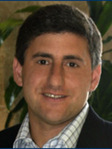
David Jeffrey Weitz, San Diego CA - Lawyer
view sourceAddress:
10410 Science Center Dr, San Diego, CA 92121
(858)6228528 (Office)
(858)6228528 (Office)
Licenses:
California - Active 1992
Experience:
Sr. VP, General Counsel and Chief IP Counsel at Takeda San Diego - 2002-present
Partner at Wilson Sonsini Goodrich & Rosati - 1996-2002
Partner at Wilson Sonsini Goodrich & Rosati - 1996-2002
Education:
UC Berkeley SOL Boalt Hall
Degree - JD/MBA - Juris Doctorate and MBA - Law
Graduated - 1992
University of California - Berkeley
Degree - Masters of Science - Organic Chemistry
Graduated - 1989
Massachusetts Inst of Tech
Degree - Bachelor of Science - Chemistry
Graduated - 1987
Degree - JD/MBA - Juris Doctorate and MBA - Law
Graduated - 1992
University of California - Berkeley
Degree - Masters of Science - Organic Chemistry
Graduated - 1989
Massachusetts Inst of Tech
Degree - Bachelor of Science - Chemistry
Graduated - 1987
Specialties:
Intellectual Property - 50%, 32 years
Contracts / Agreements - 50%, 25 years
Contracts / Agreements - 50%, 25 years
Resumes

David Weitz
view sourceLocation:
Berkeley, CA
Industry:
Photography
Work:
Berkeley High School
Education:
San Francisco State University 2011 - 2013
Berkeley High School
Berkeley High School

David Weitz
view source
David Weitz
view source
David Weitz
view source
David Weitz
view source
David Weitz
view sourceMyspace
Googleplus
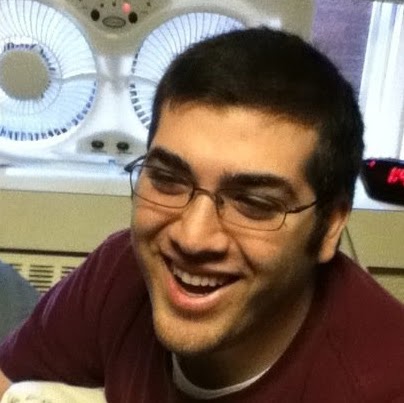
David Weitz
Education:
Central Connecticut State University - Management Information Systems, South Windsor High School

David Weitz
Education:
Benjamin N. Cardozo School of Law

David Weitz
Education:
Kent State University - Business Management

David Weitz

David Weitz

David Weitz

David Weitz

David Weitz
Flickr
Plaxo

David Weitz
view sourceJerusalem, IsraelConsultant/Founder/CEO at David Weitz Computer Ser...

David Weitz
view sourceKomar
Classmates

David Weitz
view sourceSchools:
Calhoun High School Merrick NY 1998-2002
Community:
Tony Frank, Ginny Bennette, Michael Cavuoto, Michael Loeser, Charles Hinke

David Weitz
view sourceSchools:
North Warren High School Chestertown NY 1977-1983
Community:
Peggy Moser, Gary Bolton, Jessica Baker

David Weitz
view sourceSchools:
North Warren High School Chestertown NY 1979-1983
Community:
Peggy Moser, Gary Bolton

Loras Academy, Dubuque, I...
view sourceGraduates:
David Weitz (1955-1959),
Norbert Tressel (1950-1953),
Lawrence Lyons (1955-1959)
Norbert Tressel (1950-1953),
Lawrence Lyons (1955-1959)

Wayne State University - ...
view sourceGraduates:
David Weitz (1997-2001),
Derek Einhorn (1994-1998),
Kim Horn (1994-2000),
Stephen Gryzan (1975-1979),
Edward Lake Jr (1976-1980),
Michael Zachareas (1993-1997)
Derek Einhorn (1994-1998),
Kim Horn (1994-2000),
Stephen Gryzan (1975-1979),
Edward Lake Jr (1976-1980),
Michael Zachareas (1993-1997)

Taipei American School, T...
view sourceGraduates:
David Weitz (1975-1979),
James Slaton (1972-1976),
Irene Talbot (1968-1972),
James Feely (1976-1981),
Ryan Williams (1975-1979),
David Mroz (1969-1973)
James Slaton (1972-1976),
Irene Talbot (1968-1972),
James Feely (1976-1981),
Ryan Williams (1975-1979),
David Mroz (1969-1973)

Kansas State University -...
view sourceGraduates:
David Weitz (1983-1988),
Ana Caguin (1983-1988),
Matthew Worley (1989-1989),
Greg Vavroch (1968-1972),
Michael Blankenship (1986-1992)
Ana Caguin (1983-1988),
Matthew Worley (1989-1989),
Greg Vavroch (1968-1972),
Michael Blankenship (1986-1992)

Perfoming Arts School, Ph...
view sourceGraduates:
Anita Yuthasastrkosol (1970-1974),
Shawn Mott (1980-1984),
anna babik (1981-1985),
Franki Pressman (1994-1998),
David Weitz (1985-1989)
Shawn Mott (1980-1984),
anna babik (1981-1985),
Franki Pressman (1994-1998),
David Weitz (1985-1989)
Youtube

David Weitz
view source
David Weitz
view source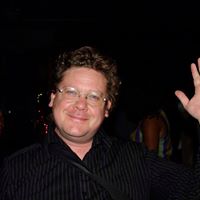
David Scott Weitz
view source
David Weitz
view source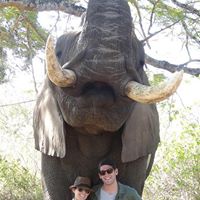
David Weitz
view source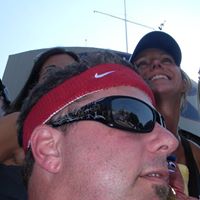
David Andrew Weitz
view source
David Weitz
view source
David Weitz
view sourceNews

What is glass?
view source- top moving. When that happens, it becomes harder and harder for you to navigate across the dance floor. If youre with your partner and you want to just trade places, you cant do it because youre so jammed, you need to get other people to move, David Weitz, a Harvard physicist, says.
- Date: Oct 17, 2023
- Category: Science
- Source: Google

'Human Cell Atlas' Helps Scientists Trace Building Blocks Of Disease : Shots - Health News
view source- One of the technological advances that enabled the Human Cell Atlas came in 2014, when Regev and colleagues at Harvard Steve McCarroll and David Weitz made improvements to a technology called single-cell RNA sequencing, which reads the RNA in each cell to see which genes are active and identifie
- Date: Aug 13, 2018
- Category: Headlines
- Source: Google
Get Report for David F Weitz from Berkeley, CA, age ~39












